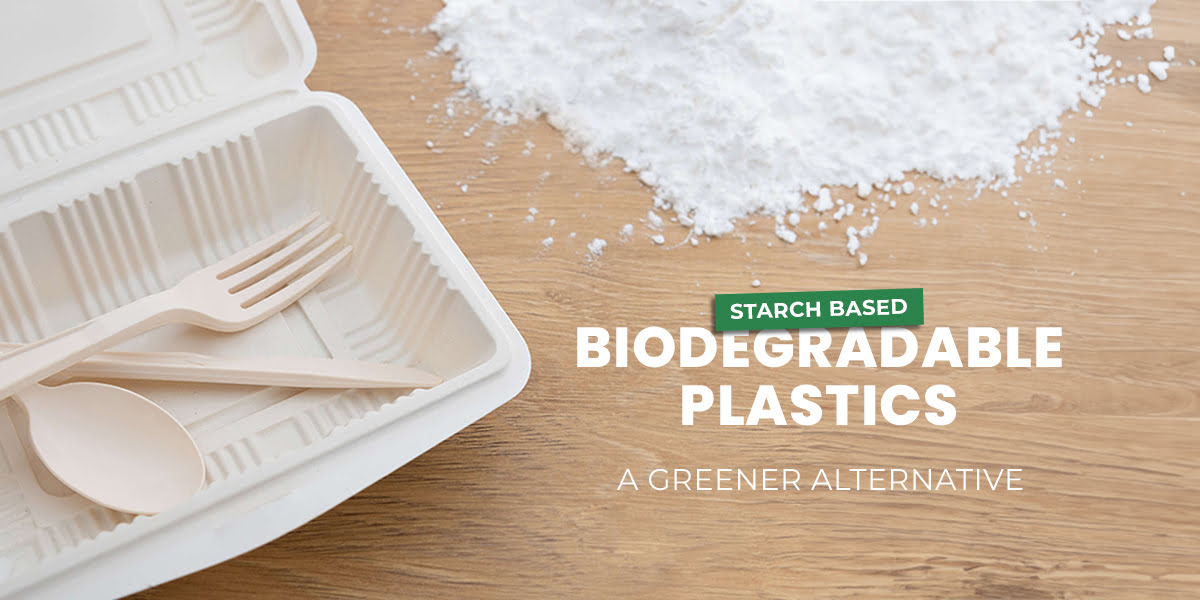The escalating concerns surrounding environmental degradation and the accumulation of non-biodegradable plastics have propelled the search for sustainable alternatives. Among the frontrunners in this green revolution are starch-based biodegradable plastics, heralding a promising era for eco-friendly packaging and reducing our carbon footprint. In this blog post, we delve into the intricacies of starch-based biodegradable plastics, exploring their composition, production process, and environmental impact.
Composition and Structure
Starch-based biodegradable plastics are derived from renewable resources, primarily corn, potatoes, and cassava. The principal component of these plastics is starch, a complex carbohydrate consisting of glucose units linked by glycosidic bonds. The molecular structure of starch lends itself to biodegradability, making it an ideal candidate for environmentally conscious packaging.
To enhance the material’s properties, various additives such as plasticizers and reinforcing agents may be incorporated into the starch matrix. These additives not only improve the flexibility and durability of the final product but also contribute to the overall sustainability of the material.
Production Process
The production of starch-based biodegradable plastics involves several intricate steps, starting with the extraction of starch from plant sources. Once extracted, the starch is processed to create a polymer matrix. This matrix is then blended with other biodegradable polymers and additives to achieve the desired physical and mechanical properties.
The extrusion process, a common technique in plastic production, is employed to shape the starch-based material into a variety of forms, ranging from films to moulded containers. The use of advanced manufacturing technologies ensures that these biodegradable plastics meet the stringent standards required for commercial applications.
Environmental Impact
One of the key advantages of starch-based biodegradable plastics is their positive environmental impact. Unlike traditional petroleum-based plastics that persist in the environment for centuries, starch-based alternatives undergo microbial degradation. Microorganisms break down the starch polymer into simpler compounds, returning it to the natural carbon cycle.
Studies have shown that the degradation process of starch-based biodegradable plastics is significantly faster than conventional plastics. In the right conditions, these materials can decompose within a few months, leading to a substantial reduction in the environmental burden associated with plastic waste.
Furthermore, the cultivation of starch-producing crops for biodegradable plastics presents an opportunity for carbon sequestration. Plants absorb carbon dioxide from the atmosphere during photosynthesis, effectively offsetting the carbon emissions associated with the production and degradation of starch-based plastics.
Economic Viability
As the demand for sustainable packaging solutions continues to grow, starch-based biodegradable plastics are gaining traction in the market. While the initial production costs may be higher compared to conventional plastics, the long-term economic benefits and positive environmental externalities make them an attractive option for businesses and consumers alike.
Governments and industries are recognizing the economic potential of investing in starch-based biodegradable plastics. Subsidies and incentives for the production and utilization of these materials are being implemented to accelerate their adoption and support the transition to a circular economy.
Challenges and Future Prospects
Despite the numerous benefits, there are challenges associated with the widespread adoption of starch-based biodegradable plastics. Variability in the quality and properties of starch from different plant sources, as well as competition with food production for these crops, are hurdles that need to be addressed.
Researchers are actively exploring ways to optimise the production process, improve material properties, and find ways for enhanced sustainability. The development of genetically modified crops with higher starch yields and tailored properties for plastic production is on the horizon, promising a more efficient and sustainable future for starch-based biodegradable plastics.
Conclusion
Bluecraft Agro represents a promising avenue in the quest for sustainable and eco-friendly packaging materials. Their renewable origin, biodegradability, and positive environmental impact position them as a greener alternative to traditional plastics. As technology advances and research continues, the economic viability and widespread adoption of starch-based biodegradable plastics are poised to play a pivotal role in shaping a more sustainable and circular future for the plastics industry. It’s time to embrace innovation and usher in an era where our packaging choices align with the health of the planet just like Bluecraft Agro did.
